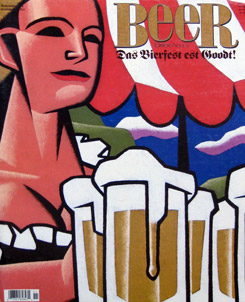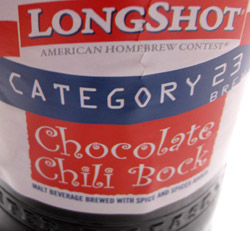 Inspired (again) by “The 5 Most Boring Topics in all of Beer Journalism” here’s a glimpse at what appeared in three magazines at the end of 1994.
Inspired (again) by “The 5 Most Boring Topics in all of Beer Journalism” here’s a glimpse at what appeared in three magazines at the end of 1994.
I picked 1994 because BeeR the Magazine was new (and not long for this world) and because many the breweries that claim a lot more ink (or bandwidth) these days than do the founding pioneers weren’t yet in business. Although they are deserving, I didn’t include brewspapers (such at Celebrator, Ale Street News and the Brewing News family) because our archives were destroyed in the Flood of ’06.
All About Beer, BeeR and American Brewer were then the big three of glossy magazines. About the time BeeR died Beer Connoisseur I passed through town (lasting not even as long as BeeR). These days, of course, we have DRAFT, Beer Connoisseur (unrelated to V1.0), Beer Advocate and Beer Magazine, plus Imbibe offering regular beer features. You’ll spot many of these on the top row at Barnes & Noble or Borders, safely out of the reach of children. (American Brewer lives on, by the way. It always targeted the beer trade but in the 1990s also served information-thirsty beer newcomers.)
ALL ABOUT BEER (November)
Features
* Born to Brew – A look inside the brewing dynasties.
* Vietnamese Beers
* Pubcrawling Toronto
Columns
* Michael Jackson’s Journal – Czechs & Balances.
* Fred Eckhardt – Brewspeak: A Beginner’s Guide to Craft Beer.
* Alan Eames – On Groaning Beer and Babies.
* Byron Burch – Stylistically speaking, Oktoberfest.
Departments
These included news, homebrewing, Lucy Saunders on festival foods, collectibles, brewpub visits, book reviews and “Beer Talk.” The beers reviewed: Abita Amber, Labatt Blue, Purgatory Porter (it was spoiled), Redhook ESB, Berghoff Dark, Christoffel Blond, JJ Wainwright’s Select Lager, Red Tail Ale.
BEER (November)
That’s the cover at the top. BeeR was the brainchild of Bill Owens, who also published American Brewer. From the beginning Owens, himself a well known photographer, attracted very talented illustrators and photographers, although the magazine lasted only about a dozen issues.
Table of Contents
* A Question of Taste – A sensory exploration.
* The Art Guys – Using beer stuff to create art.
* The New Art of Ale – Randy Mosher on America’s innovative ales.
* Smuggler’s Brews – Snagging a few pilsners in Iraq.
* Garbage Pail Willie’s Last Great Batch – A story of homebrewed beer in Chicago.
* Plastic, Fantastic Brewpub – Northwestern Brew-Pub & Cafe in Portland, Oregon.
* Biere Au Naturel – Organic beer.
* A Glass of Wendy – Written by Garrison Keillor (yes, that Garrison Keillor).
* Proclaiming & Declaiming – Two Scottish musicians prefer stout.
* Eat Me, I’m on Irish Time – Kelly’s Irish Times in Washington, D.C.
* Das Münich Bierfest ist Goodt – Oktoberfest in Munich.
* Germany’s Other Brewfest – Oktoberfest in Stuttgart.
* Sing a Drinking Song – Beer at music festivals.
* Europe on a Gallon a Day – Tips from Tim Webb.
* A Really Cold One – Beer ice cream recipes.
* Book Reviews
* Michael Jackson – “On Meretricious Myths and the Sweet Taste of Truth.”
* Homebrewing – Charlie Papazian.
* Beer Festivals – Various reviews.
AMERICAN BREWER
Features
* 1994’s Best Tap Handles
* Financing on Tap – Tips for raising capital.
* Reviving Cincinnati’s Brewing Heritage
* Beer Engines in New England
* Interview with Paul Shipman of Redhook. Headline “Dark Clouds Over Paradise.”
* Rogue Ales in Japan
* Star Union – An Illinois brewery reborn.
* The Perennial Hop – In the American Northwest.
* Music Festivals – A different story than in BeeR. Bill Owens sometimes asked writers to rework pieces to suit his two magazines.
* Micro Goes Macro – Gordon Biersch.
Departments
Regular features included a column by Dick Cantwell (who still has a column in AB), a report on festivals, classified ads for brewing equipment, and BeerScopes (as stupid as the name implies).
 Perhaps it’s because I live in a state where
Perhaps it’s because I live in a state where